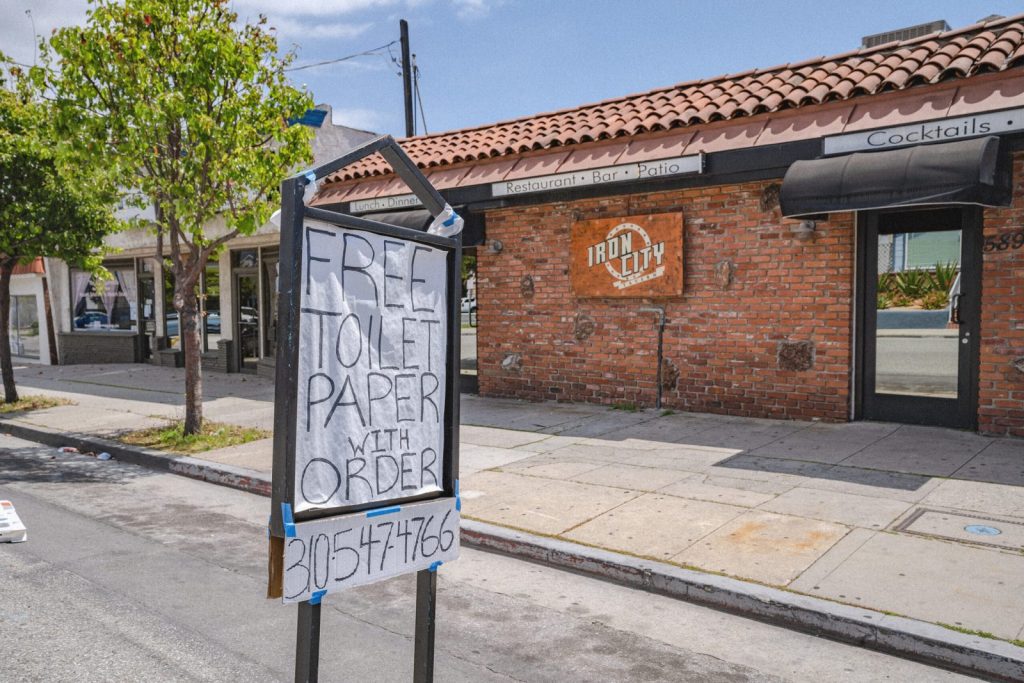
Strengthen your brand identity design after Coronavirus: Develop new distribution methods, enhance your brand purpose, expand markets, and more.
Some marketers only associate brand identity design with actual graphic design. Logos, fonts, and colors make up part of the package that help consumers identity a business, but that’s not all of it. Taken together, the concept of a brand refers more to an emotional or even a philosophical reaction that people have. And that’s coming from Lucidpress, a company that helps customers mostly with the graphical aspects of their small business branding.
While the visual elements and consistency of small business branding remain critical, that’s probably not the part of the brand that business owners may seek to change during and after the COVID-19 epidemic. Consider some examples of businesses that have successfully transformed themselves to remain viable during the outbreak and emerge even stronger afterwards. These examples are bound to generate some great brand ideas for your own company.
Small business ideas to change my branding during and after COVID-19
Forbes mentioned that it’s not entirely possible to know how the coronavirus outbreak will change long-term consumer behavior. Right now, it’s easy to see that consumers have grown more cautious about leaving home and in many cases, spending money. Like Forbes, many marketers predict that people will retain some of these habits for quite awhile in the future as the world emerges from the outbreak and begins to experience more normal conditions.
With that in mind, consider some brand ideas that can help enhance and promote small businesses during the current outbreak and even into the future.
Establish brand purpose
Certainly, your business exists to make money. The idea of brand purpose refers to establishing a reason for your brand to exist beyond generating profit. A business can derive its purpose directly from the types of products or services that it offers customers. For instanced, a daycare exists to take excellent care of children.
However, this purpose can extend further to the ideals and causes that the company supports. Numerous studies have found the people will vote with their wallets to support companies that align with their own views, even if it costs somewhat more to do so. If you can establish your brand purpose both with the products or services you supply and by supporting good causes, you will always have an easier time attracting and retaining customers.
For some brand purpose ideas, consider these diverse examples:
- Most people have had a hard time finding hand sanitizer on store shelves. Several distilleries have helped enhance their brand by switching from only producing alcoholic spirits to producing alcohol-based hand sanitizers. Depending upon their own business needs, they may sell, give them away, or sell some and donate some. Either way, they can keep employees and suppliers working while enhancing their brand image by providing vital supplies.
- A number of beauty and cosmetic companies have also switched gears to producing sanitizing gels. In addition, Avon has started creating personal care packages with such essentials as shampoo and body wash as donations to Feed the Children.
- Lego has also contributed with its existing “Explained With Lego Video Bricks” video platform on YouTube. To support the multitudes of currently homeschooling parents, they have recently posted a number of educational topics. These range from explaining how renewable energy works to the fundamentals of genetics.
In all of these cases, the businesses contributed to their customer’s current needs, those of worthy charities, or some of both. Can your business contribute by helping consumers with the current situation or at least, donating to good causes?
Create constructive partnerships with other good brands
When the going gets tough, maybe the toughest work together. You can find a number of ways that small businesses have partnered up with other brands for their mutual benefit.
For instance, restaurant dining rooms have closed all over the country. Of course, some of these places have turned to pickup and delivery for revenue. Along with this, some meal delivery services have focused upon helping to promote the local eateries they work with and often, waived some delivery fees for the duration of the crisis. Typically, grocery stores can still do business and have generally done a brisk business since people still need to eat. They have even partnered with local restaurants to offer packaged meals from within the grocery store.
As another example, several eCommerce companies have teamed up to make pledges to donate a portion of their revenues to virus-related charities. All of these different brands have promoted a website that informs the public about this worthy effort and at the same time, the charity site also promotes the business.
Expand business into new markets
Some companies have found that their past clients just cannot use their existing services at the moment. For example, one cleaning company lost business because many customers refused to allow them inside their homes during the outbreak. They did find new customers when they pivoted to offering sanitizing services to buildings that still need to stay open. While they haven’t quite made up for the temporarilly lost customers, they did find a new market in order to keep employees working. After the outbreak passes, they hope to recover their old customers and of course, keep these new ones.
Likewise, a number of local gyms have begun to offer at-home, live video classes to keep their membership fit and even better, still subscribing to their services. Using tools like Zoom, the live classes can also offer people some of the same social outlet that they may have enjoyed during in-person classes. Some of these gyms also mostly catered to adults, but they have expanded to offering kid’s classes to help families cope with the problem of spending too much time indoors and inactive. After the pandemic relaxes restrictions on these gyms, some patrons may still enjoy the option of attending video classes, and that could even provide a way for these fitness businesses to grow membership in the future.
Develop new delivery channels
After receiving stay-at-home orders from the government, countless businesses lost their main delivery channels overnight. It appears intuitive that these companies should develop new distribution methods that can keep them in business during the outbreak and possibly, provide extra revenue in the years to come.
For instance, quite a few smaller retail businesses have thrived by keeping the old-fashioned model of in-person, in-store service. Unable to open their doors, Chicago’s La De Da gift shop provides one example of a company that swiftly took their model online. Before, customers would come into the store, have a conversation with the proprietor, and enjoy having her select the perfect gifts. Now, they can enter answers to the kinds of questions that the owner would ask them to get the same sort of service online.
Other brick-and-mortar stores have quickly established or strengthened their eCommerce sites. While retail business has struggled, eCommerce has exploded as customers need items conveniently delivered to their homes. While some stores have simply created typical online stores, others have done more. For example, one old-fashioned toy store in Connecticut offers customers the option to browse their physical store through FaceTime. Once parents and children have agreed upon a purchase, the parents can order the toy for delivery or curbside pickup.
Again, these expanded distribution methods can help small businesses sustain themselves during this unprecedented crisis. In the future, they can help generate more business by offering a convenient option for local customers and even a way to attract business from further away than the original store’s city limits.
How can you rethink your small business brand identity design during the Coronavirus epidemic?
Obviously, most small businesses have faced unexpected challenges during this outbreak. It’s unlike anything that business owners or their customers have faced before. As with most crisis, savvy businesspeople can also find some opportunities to rethink their branding, connect with customers over their brand purpose, develop partnerships with other businesses, expand into new markets, and create new distribution channels. These changes may stem from necessity today; however, many of them can also serve your business by strengthening it in the future.




